BEST CRYPTOCURRENCIES TO INVEST IN 2018

Are you looking for the best cryptocurrencies to invest in 2018?
Today, there are thousands of cryptocurrencies available for trading on various global exchanges. In fact, more cryptocurrencies are developed and released every day. It’s no wonder most people are left wondering which cryptocurrencies are worth taking a look at?
Bitcoin is still considered the Global-Leader and the Godfather of all cryptocurrencies born from the original Satoshi Nakamoto “Whitepaper”, but competition is fierce and change is the only constant.
Many cryptocurrencies/blockchains have improved on the original Bitcoin protocols or adapted their usability to much more specific use-cases. Most of the new cryptocurrencies that exist today are now focused on utility and decentralized applications. There are however other promising cryptocurrencies focused on currency, specifically around privacy, security, and scalability.
Blockchain technology is in its infancy and can someday revolutionize the mobile and computing industry much like how the internet did in the 90s and how the cloud is doing now.
CRYPTOCURRENCIES TO INVEST IN 2018
Please note these are listed in random order.
Ethereum
Cardano
Bitcoin Cash
Ripple
IOTA
NEM
Litecoin
Monero
Zcash
Dash
Siacoin
Stratis
Golem
Factom
Lisk
Qtum
OmiseGo
NEO
ETHEREUM

Created by 19 year old math-prodigy Vitalik Buterin, Ethereum is second only to Bitcoin in the hierarchy of cryptocurrencies. Like Bitcoin, Ethereum is a distributed public blockchain network. Although there are some significant technical differences between the two, the most important distinction to note is that Bitcoin and Ethereum differ substantially in purpose and capability.
Bitcoin offers one particular application of blockchain technology, a peer to peer electronic cash system that enables online Bitcoin payments. While the Bitcoin Blockchain is used to track ownership of bitcoins, the Ethereum blockchain focuses on running the programming codes of decentralized applications, or “dapps” for short.
Before the creation of Ethereum, blockchain applications were designed to do a very limited set of operations. Bitcoin and other cryptocurrencies, for example, were developed exclusively to operate as peer-to-peer digital currencies. Ethereum’s creator, Vitalik Buterin took an entirely new approach, and with it forever changed Blockchain, applications, and the (new-coming)Internet as we know it.
Ethereum’s core innovation, the Ethereum Virtual Machine (EVM) is a Turing complete software that runs on the Ethereum network. It acts as both a crosscommunication layer between the thousands of dapps on the Ethereum Network, a security layer ensuring one blockchain or program can not interfere with another, and a test environment for developers to safely execute new dapps and protocols on the Ethereum Blockchain.
The Ethereum Virtual Machine makes the process of creating dapps easier and more efficient than ever before. Instead of having to build an entirely original blockchain for each new application, or hi-jack and modify an existing open-source blockchain, every Ethereum Node serves as a home-base for dapps to run.
In February 2017, Ethereum organization announced the Enterprise Ethereum Alliance (EEA), aimed at developing massive business solutions with Ethereum.
More companies and corporate giants become involved with Ethereum everyday: Microsoft, Mastercard, BP, Intel, Samsung, JP Morgan, Toyota, Cisco, Consensys, National Bank of Canada, and Scotiabank to name a few.
CARDANO

Cardano is a smart contract platform, similar to Ethereum, with a focus on security through a layered architecture. It’s the first blockchain project to be created from scientific philosophy and built on peer-reviewed academic research.
The team is building Cardano with both the end-user and regulators in mind. They’re attempting to find a middle ground that balances the need for regulation with the privacy and decentralization principles at the core of blockchain technology.
The platform also uniquely uses Haskell, a programming language with a high degree of fault tolerance. With the relatively unknown future and complexity of blockchain-based systems, it’s important to build flexibility into projects. It’s near impossible to know what a system may have in months or even years, so it’s important to have a robust language like Haskell which allows you to have a certain margin of error.
Unlike some other crypto projects, the goal of the Cardano team isn’t to overhaul the entire financial system. Their aim is to use blockchain technology to bring banking systems to places where they’ve previously been too expensive to implement – specifically the developing world.
BITCOIN CASH

The biggest limiting factor of Bitcoin is it’s scalability: it’s ability to grow and optimize in face of ever-increasing network demands resulting from ever-increasing popularity. Bitcoin transactions are completed when a “block” is added to the blockchain. A full 1Mb Bitcoin block generally contains around 2000 transactions and generally takes around ten minutes to process.
If you compare this to the 2,000 transactions per second that Visa can handle, you can see how scaling has been holding Bitcoin back.
The many groups that make up Bitcoin have been debating and arguing over the best method means of a scalability upgrade for a long time now. There have been many propositions throughout it’s lifetime, but recently a decision was made.
The Bitcoin Team decided to implement a protocol known as “Segregated Witness” or “Segwit”, enabling it to take part in the Lightning Network.
Some Bitcoin miners and developers did not agree with this protocol upgrade or trust the “New York Agreement” (the agreement that later down the road blocksize would also be increased to 2Mb) to be honored, and thus the community forked and Bitcoin Cash was born.
The Bitcoin Cash solution to the scalability problem was to increase the blocksize to 8Mb, a solution favored by a lot of “miners” and in theory making it capable of roughly eight times Bitcoin’s original 1Mb limits.
RIPPLE

One of the most hated blockchain projects in the cryptocurrency community is Ripple. While Ripple has a native cryptocurrency “XRP”, and still has many of the abundant benefits associated with blockchains and cryptocurrencies, it lacks one fundamental element that truly drives blockchain supporters: Decentralization.
They do claim it, but the mere facade of words still boils down to the fact that the majority of it’s users are financial institutions and banks, or “Centralizations”.
Ripple Labs created every XRP token there ever will be, meaning the currency can not be “mined” or earned “de-centrally”; Ripple Labs holds every XRP in existence outside of the ones they have allocated to the various corporations using Ripple. The goal of the ripple system, according to its website, is to enable people to break free of the “walled gardens” of financial networks – ie, credit cards, banks, PayPal and other institutions that restrict access with fees, charges for currency exchanges, and processing delays.
While this seems a bit contradictory, they do at least, in theory, provide many improvements to current banking and financial institution implementations. Banks loves Ripple and their corporate support continues to grow.
IOTA

IOTA stands for Internet of Things Application, and it’s a new crypto technology that facilitates transactions between devices on the Internet of Things (IoT). IOTA addresses the transaction fees and scalability issues of blockchain technologies by getting rid of the block and chain. Instead, in order to submit a transaction to the IOTA ledger, you must verify two other previous transactions.
This method of verification means there’s no central ledger, and there’s no need for miners to power the network.
As the devices on the network randomly verify each other’s transactions, they build consensus through the web of connections between transactions. In cryptography, this type of verification is known as Directed Acyclic Graph (DAG), but the creators of IOTA call it the Tangle.
Since computing power in the Tangle grows as the network grows, IOTA is promising free, fast transactions. It’s also designed to process micro-payments and payments between machines, facilitating a whole machine-to-machine micro-economy.
While IOTA makes big promises, the technology is still new, and it’s not without its detractors. In this article, we’ll look at how IOTA works, what it might be used for, some of the criticisms it’s facing, and whether you should invest in the token.
NEM

NEM is a peer-to-peer(P2P) cryptocurrency platform. The initial plan for NEM was started by a Bitcoin Talk forum user called UtopianFuture who wanted to upgrade on the Nxt platform.
Instead, NEM was built from the ground up in the well known Java programming language.
NEM has since partnered with one of Japan’s largest cryptocurrency exchanges “Zaif” which led to a partnership with Mijin, a Japanese “private blockchain” powerhouse aiming “to reduce the costs of financial institutional infrastructures to 1/10 current by 2018”. Most blockchains are inherently public and allow any interested user to partake in becoming part of the blockchain. This has been a problem in the eyes of many large corporations and financial institutions wanting a more private approach regarding their data.
And so, the NEM/Mijin collaboration was born: the first unity of both public and private blockchains. NEM and Mijin are currently working to rewrite the code-base in C++ (a project named Catapult) to facilitate this merger offering both better scalability and overall performance as well as many new features.
The NEM/Majin platform is chalk full of features:
Node reputation: verified for accuracy by it’s neighbors, a node’s data is only recognized by the network after it has received an existing provably accurate reputation.
Namespaces: allowing a user to register a domain name similar to the current Internet practice, as well as sub-domains within each root domain allowing vast user organizations and identity retention.
Encrypted Communications.
Mosaics: an under-development form of asset creation on the NEM network similar to ERC20 tokens.
Spam Protection: upon spam-node detection, the network specifically raises that node’s transaction costs.
Supernodes: receiving rewards and allowing the network to more easily process data based on their POI (Proof of Importance) algorithm factor.
The Japanese government’s legalization of Bitcoin led to a national surge in blockchain interests and initiatives and NEM has quickly become one of the most endorsed blockchain platforms in Japan.
LITECOIN

Litecoin was one of the first cryptocurrencies after Bitcoin and tagged the “Silver” to Bitcoin’s “Gold”. Block transactions can be almost instantaneous and generally never exceed five minutes.
With a large amount of tokens and a new unique mining algorithm(Scrypt), Litecoin has continued to prove it’s worth and longevity, and it’s generally one of the more stable-priced coins on the market. Some even believe it will one day overtake Bitcoin as the “Crypto King” making it a very popular cryptocurrency throughout the community.
Scrypt-based mining spawned a new generation of GPU mining that still exists today. Check out Build Your Own GPU Mining Rig for Ethereum and Litecoin.
These days the Litecoin blockchain is becoming an experimental playground for
Bitcoin implementations. Despite having no blocksize congestion like Bitcoin, [Bitcoin] scaling solutions like Segregated Witness(SegWit) and Layer 2 protocols like the Lightning Network are being tested in production on its live blockchain before ever being integrated into Bitcoin.
Recently Charles Lee who invented Litecoin, returned from Coinbase to head Litecoin once again.
Litecoin’s active trading volume has remained very high, and is most generally seated in the top 5.
MONERO

Monero is the most prominent example of the CryptoNight algorithm. This algorithm was invented to add multiple privacy features not seen in most cryptocurrencies and was born from the CryptoNote privacy protocol.
If you use Bitcoin, every transaction is documented in the blockchain and the trail of transactions can be followed. With the introduction of a concept called ringsignatures, the CryptoNight algorithm was able to burn a hole in that trail making it near impossible to track any kind of processed transactions between addresses, or even determine the amount of funds held in an address, as is possible with Bitcoin.
The first implementation of CryptoNight, Bytecoin, was heavily pre-mined and thus rejected by the community. Monero was the first non-premined clone of Bytecoin; Monero raised a lot of awareness for its extreme anonymity capabilities. There are several other incarnations of CryptoNote with their own little niche improvements, but none of them have achieved the same popularity as Monero.
The popularity of Monero is growing extremely quickly, and at the time of this writing it’s price has nearly doubled from ~$50 to ~$100.
Truly one of the go to choices in anonymous currencies.
ZCASH
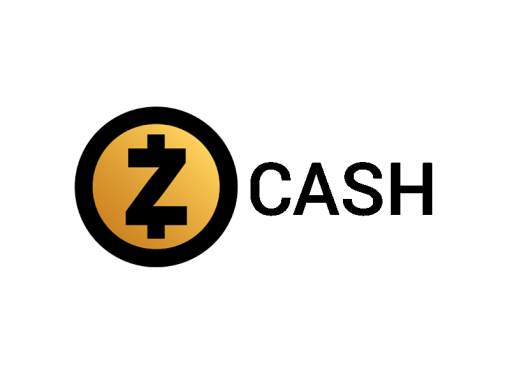
The majority of blockchains are completely transparent, as is the case with Bitcoin, and this does not appeal to everyone.
Zcash is an extremely popular fork of the Bitcoin Protocol and has received a lot of publicity for their support from Ethereum Founder Vitalik Buterin who also serves on their team of advisors.
This means the Zcash team copied the Bitcoin programming and adapted it to their needs (most blockchains are completely open-sourced so this is perfectly okay.)
When using Bitcoin, every: wallet, transaction, amount, and coin have a unique transparent identity, meaning anyone can trace any transaction that has ever happened with any Bitcoin, as the blockchain records all of this: when, where, and how much.
Many financial institutions and business have a need for data privacy to protect their trade-secrets and keep their partnerships invisible to outside competition. Expanding on this, many individuals simply wish to maintain their privacy.
One of Zcash’s biggest sell points is its fungibility. Fungibility means that no matter what, one ZEC will always be abolutely identical to and interchangable with any other ZEC, opposed to bitcoins for example whos data coding change with every transaction. It is possible to identify a single bitcoin based on it’s trackrecord, this is impossible to do with a ZEC.
Zcash operates on something known as “zero-knowledge proofs”. Zero-knowledge proofs allow users to encrypt both the sending and receiving addresses as well as the amount of funds in the transaction. The Zcash Blockchain is able to verify the legitimacy of these transactions without ever deciphering the encrypted data, providing both the extreme accuracy and trust associated with blockchains, as well as the data privacy of encryption technology.
Zcash’s blockchain shows only that a transaction took place, not who was involved or what the amount was.
ZCash is also a favorite among miners as it has remained more profitable than most of the other altcoins, due largely in part to it’s 2.5 minute average “block time”, 2mb block-size, and 12.5 ZEC per mined-block reward.
DASH

Dash is another more private version of Bitcoin; branded as a privacy-centric digital currency with instant transactions. It offers more anonymity than Bitcoin as it works on a decentralized masternode network that makes transactions almost untraceable. Dash is also another entirely Fungible cryptocurrency.
Dash is very fast in its standard transactions and its “Instasend” and “Privasend” features have even more functionality for a higher transaction fee, making it an ideal cryptocurrency in a retail setting.
“Privasend” is a currency “mixing” feature that breaks down and shuffles your transaction with other transactions as a means of retaining payment anonymity.
“Instasend” is the other prime Dash feature that makes use of a “transaction locking” protocol within the masternodes to prevent the dreaded “double spending” predicament, while moving your Dash coin from point A to point B in a matter of seconds.
To make things better, Dash has partnered with multiple companies to implement a “crypto-to-fiat” debit card that you can use to make purchases anywhere you could normally use a debit card. True to its name, Dash coin is one of the fastest transacting cryptocurrencies around.
SIACOIN
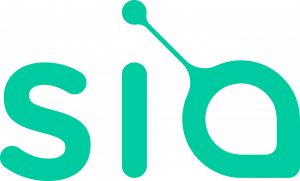
The idea for the project was conceived back in 2013 at HackMIT, which is a hackathon hosted at the Massachusetts Institute of Technology. The idea is simple: allow anyone to rent out their storage space and in return receive a reward for their contribution to the network.
Sia uses encryption technology along with blockchain to ensure the privacy and safety of data transfers, preventing third party interference in any way. Instead of data being hosted on central servers, Sia’s blockchain technology has decentralized file storage and made it open source.
Sia also allows companies to host their own private cloud and sell that as a service to their customers. Sia’s approach to blockchain node storage drastically reduces hosting and storage costs for all parties.
Their long term company goal is to become the argest storage super-server on the planet and the data storage backbone of the new Internet.
STRATIS
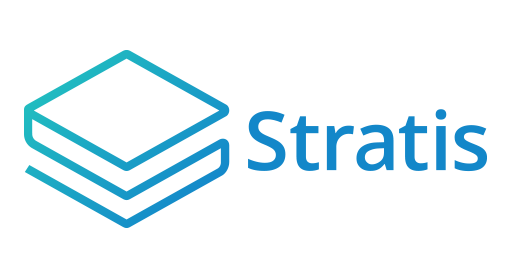
Stratis aims to make blockchain easier for everyone to understand. The project offers affordable solutions for blockchain development, testing, and deployment of applications.
One aspect of the Stratis project is their enterprise development platform. It is quite complicated to get involved in building blockchain-based applications but the team has created a user-friendly solution with the goal of allowing almost anyone to do it. Many companies and corporations existing outside of the tech world will massively benefit from this.
One of the most attractive traits of the Stratis platform is its focus on native C# and .NET applications. Stratis wants to make the transition for software developers a lot smoother. Rather than using a very “heavy” and less known coding language like Ethereum’s Solidity, Stratis chose to develop its platform on C# and .NET because they are both extremely well known in the business enterprise world and already used by every computer running Windows, making it a very popular and well-known language amongst developers.
Moreover, the proprietary blockchain offered by the platform uses the latest advances in stability and security found in the Bitcoin protocol. So far, the company has partnered with leading blockchain platforms including Ledger, Microsoft Azure, and Changelly.
GOLEM

Golem is a platform built on a peer-to-peer network which allows users to market their computer hardware in a decentralized manner creating a global market for computation. They call it the “worldwide supercomputer,” for which anyone can supply and anyone can buy.
Today, the cloud computing space is dominated by corporate giants like: Amazon, Microsoft and IBM. Due to a general lack of competition, the prices for these services are extremely inflated. Golem aims to disrupt this status quo and provide an extremely affordable and competitive alternative in face of these corporate giants.
With Golem, everyday computer users, even those with low-end computer hardware, will have access to complex applications such as computer-generated imagery (CGI) rendering, big-data analytics and machine-learning.
The platform will also provide an “Application Registry” which enables anyone to deploy software to the network, along with a “Transaction Framework” which allows for user-deployed applications to be distributed and sold. Together, these two components aim to create an environment for the rapid growth of community-driven innovations and applications.
The dream of Golem is to utilize and unite every available piece of hardware on the planet into one giant web of decentralized computing power. “the World’s Decentralized Super-Computer.”
FACTOM

Factom’s business motto is “to build a more honest and transparent world; creating [blockchain] software that makes it impossible to change the events of the past and utilize that software where it solves valuable business problems.”
The Factom Blockchain is an open source project to secure data and systems. It allows users to “write” data into their immutable ledger which is in turn shared over it’s distributed hash table (comparable to encrypted torrent files) both securing it and providing use of it. Traditionally it has been very expensive to encode user-generated data into a blockchain, Factom serves to correct this.
Factom was built on top of the Bitcoin Blockchain to make use of Bitcoin’s extremely high hashrate(computing) power, and utilizes it’s own data management services to create extremely efficient data applications and services.
Essentially, Factom acts as a mathematically provable notarization service. If your application needs a central server to coordinate processes, it’s very likely Factom can replace it. A few use cases themes for Factom include: asset trading and management, security applications, record systems, and proofs-of-processes.
LISK

LISK IS JAVA !
Java is one of the most widespread programming languages deployed in the world today. That fact alone coupled with how long Java has been around, lay the foundation for what is an extremely potent blockchain that may just become extremely powerful.
Lisk serves to take over the centralized application market place (specifically naming Apple’s App Store and Google’s Play Store) and replace it with a more favorable decentralized application platform.
The Lisk Foundation went live with their own ICO on May 24th 2016, and have been hard at work since developing and optimizing their platform while working with various contractors to release their own Software Development Kit (SDK).
The Lisk SDK contains a framework written in JavaScript completely designed to allow developers to deploy their own sidechains and or blockchain applications connected to the Lisk main-net.
Running from their own side-chains, all platforms on Lisk will be connected and inter-communicable providing both huge community possibilities as well as increased security for both the side-chain implementations as well as the Lisk main-net.
WAVES

Waves is a blockchain platform built entirely for ease of use and mass adoption. Their goal is to allow anyone and anybody to design, launch, distribute, and trade their own cryptocurrency.
The waves platform is fully decentralized, transparent, and auditable. They have both a “Chrome add-on app” and an “html lite-client” allowing users to interact on the Waves Blockchain without downloading an entire node.
Waves runs on one-minute average block-times with extremely low transaction fees and up to 1,000 transactions per second. Waves utilizes fully compliant fiat currency transference gateways to easily exchange finances to and from your bank.
The Waves platform plans to implement a smart-contract system by Q4 2017.
QTUM
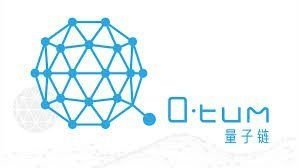
Qtum is a hybrid blockchain application platform combining a fork of the “bitcoin core”, an “Account Abstraction Layer” allowing it to run multiple Virtual Machines including Ethereum’s EVM as well as Proof of Stake protocols. This robust hybrid blockchain implementation will allow for multiple smart contract and dapp possibilities while offering a very attractive platform for developers.
Their “Account Abstraction Layer” acts as a merger-bridge between Ethereum’s smart contract capabilities and Bitcoin’s Unspent Transaction Output model. Qtum will also incorporate Oracle and Datafeed functionalities allowing the creation of smart contracts built around verifiable automated sources of information.
Essentially, Qtum runs much like Bitcoin by design with the added ability of executing multi-layered smart-contract functions through the abstraction layer. They propose this model is more secure than either platform, and will allow businesses to protect their business secrets in smart contract executions. Qtum will also benefit from the upcoming Bitcoin scaling solutions (like the Lightning Network) without suffering the scalability problems currently seen in Ethereum;
They will avoid these problems by both implementing less demanding Proof of Stake algorithms and being compatible with upcoming Ethereum protocol upgrades.
OMISEGO

“Unbank the Banked with Ethereum”
OmiseGo is an Ethereum-based financial technology produced by Omise for the mainstream. Providing digital wallets and enabling real-time peer-to-peer value exchanges across jurisdictions in both fiat currencies and cryptocurrencies. Specifically designed for financial inclusion and to disrupt existing financial institutions.
Currently operating primarily in Asian countries: Thailand, Japan, Singapore, and Indonesia, OmiseGo plans to go full-scale on the entire Asia-Pacific region.
OmiseGo is an “in-development” mobile wallet device platform partnered with a physical debit card to merge the gap between “bleeding-edge” blockchain cryptocurrencies and “current generation” infrastructure. OmiseGo received $20mil in startup funding from: Sinar Mas Digital Ventures, Ascend Money, and Golden Gate Ventures.
Parent company Omise has contributed a lot to multiple blockchain projects like: Ethereum’s DEVGRANTS initiative, Raiden, Hydrachain, Golem, Tendermint, and Cosmos. Omise is a very successful existing online payment platform with a very dominant base in the Asian markets.
NEO
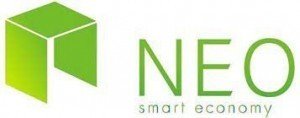
Formerly Antshares, NEO’s focus, much like Ethereum, is on “smart-contracts”: conditional agreements set in code into the blockchain ensuring everything once agreed upon happens as intended.
However, NEO’s approach to this is much different than Ethereum’s. Instead of operating their system on their cryptocurrency backed by the use of their platform, their cryptocurrencies (NEO, and GAS) are actually backed by fiat. Instead of actually representing permission-of-utility in the NEO system, their crypto-assets are basically just company securities. Not what you would except a blockchain company, however they operate this way arguably for a good purpose.
Although Blockchain has been getting massive amounts of mainstream attention and countless investors of late, many traditional institutions and investment firms are intimidated by the “lack of tangible backing”, that is to say: cryptocurrencies are not backed by a physical asset and are therefore too risky for businesses and investments.
Seeing this common “traditional business” perspective, NEO devised a solution. By backing their cryptocurrencies and platform and performing their business transactions with tangible fiat currency they may have opened the door to opportunities and investors many blockchain platforms will not see.
This gives these traditional businesses and investors the familiarity and security associated with fiat currency they are looking for, as well as allowing them the countless benefits we know and love with blockchain.
THE BEST CRYPTOCURRENCY TO INVEST IN?
As you can see from this list, there are a lot of good and promising cryptocurrencies in existence today. This is a small sample of the best and most promising cryptocurrencies to invest in from the list of over 1400 coins. As for which one is the best cryptocurrency, that is up to you to decide.
follow me at @sefantech
drop comment
Congratulations @sefantech! You received a personal award!
Click here to view your Board
thanks
@sefantech, thank you for supporting @steemitboard as a witness.
Click on the badge to view your Board of Honor.
Once again, thanks for your support!
Do not miss the last post from @steemitboard:
Congratulations @sefantech! You received a personal award!
You can view your badges on your Steem Board and compare to others on the Steem Ranking
Do not miss the last post from @steemitboard:
Congratulations @sefantech! You received a personal award!
You can view your badges on your Steem Board and compare to others on the Steem Ranking
Do not miss the last post from @steemitboard: